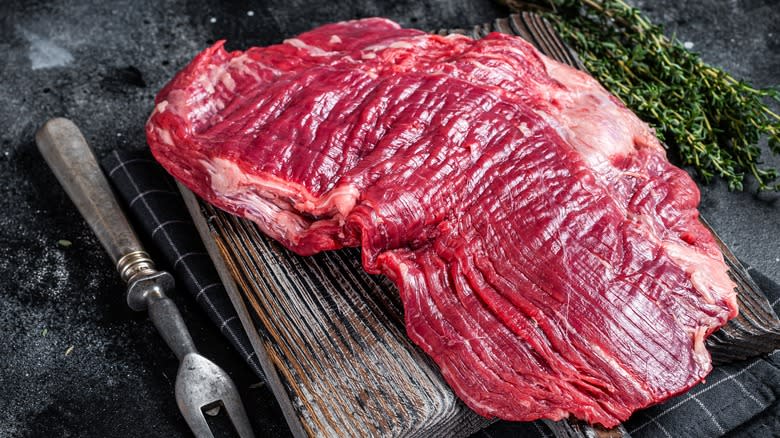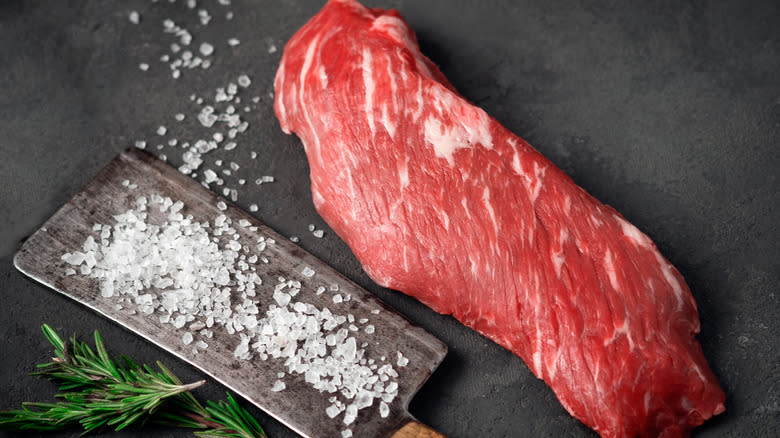The Best Cut Of Meat To Substitute For Flank Steak

Once upon a time, flank steak was the cheaper alternative to other, more tender types of steak. That's not always the case anymore, as flank (also known as flap, or bavette steak) has grown in popularity. You may be asking yourself why you're still using it for your cookout when there may be better alternatives. People have more options than they realize. But when it comes to flavor, texture, and price, your best bet is to substitute skirt steak or flat iron steak.
Flank steak is known for its toughness. It comes from the flank primal in the abdominal area, which gets worked out every time the cow moves, resulting in long muscle fibers and a noticeable lack of fat content. Its lean, fibrous profile has historically kept it at the lower end of beef quality, but that's not to say it's a bad cut. If you don't know what you're doing, flank steak can become a chewy, dense mess. But given a little care and attention, and cooked fast and hot, flank steak can shine with the rest of them.
That being said, when substituting flank steak out for another type of meat, you'll want to know how the meats compare and what you may need to adjust in terms of preparation because of the differences.
Read more: Your Guide To The Different Cuts Of Steak
Starting With Skirt Steak

Skirt steak and flank steak are similar enough that they often get confused with each other. Skirt steak also comes from the lower half of the cow, but it is taken from the plate primal as part of the animal's diaphragm. Although it's also known for being a tougher cut of meat, it has more marbling (fat content) compared to flank steak, which makes it flavorful and a more forgiving piece of meat to cook with.
Many flank steak recipes will call for an acidic marinade to help tenderize the meat's muscle fibers. Skirt steaks are similarly fibrous but, because they have more marbling, you'll need to adjust the marinade process a little. Feel free to use the same marinade, but shorten the amount of time you're letting it soak. Don't marinate skirt steak for more than 30 minutes.
As for cooking, flank steaks are almost universally cooked at high heat for a short time. Skirt steaks are often cooked the same way, though their fat content does make them a little more versatile. If you have a specific recipe you're making, there's no need to adjust the temperature or cooking time. Skirt steak will respond well to however the flank steak was going to be prepared.
The Flat Iron Steak

The other great substitute for flank steak is flat iron steak. Flat iron steak comes from the chuck primal near the shoulder of the cow, which is known for its rich marbling. Chuck primal has a reputation for being chewy due to a good amount of muscle fiber in the shoulder, but flat iron steak is more tender than flank steak.
As we've said, flank steak is best cooked over high heat for a short time. If you cook flank steak past medium-rare, you're increasing your chances of ending up with a tough piece of meat to chew on. Flat iron steak, on the other hand, can handle a little more action. You can cook it up to medium without seeing a decline in texture, though medium-rare is recommended. Flat iron steak does still have some tendons that could be chewy and need softening up, so a marinade is a good idea. Again, simply decrease the amount of time spent in the marinade to accommodate for the higher fat content.
Read the original article on Tasting Table.

